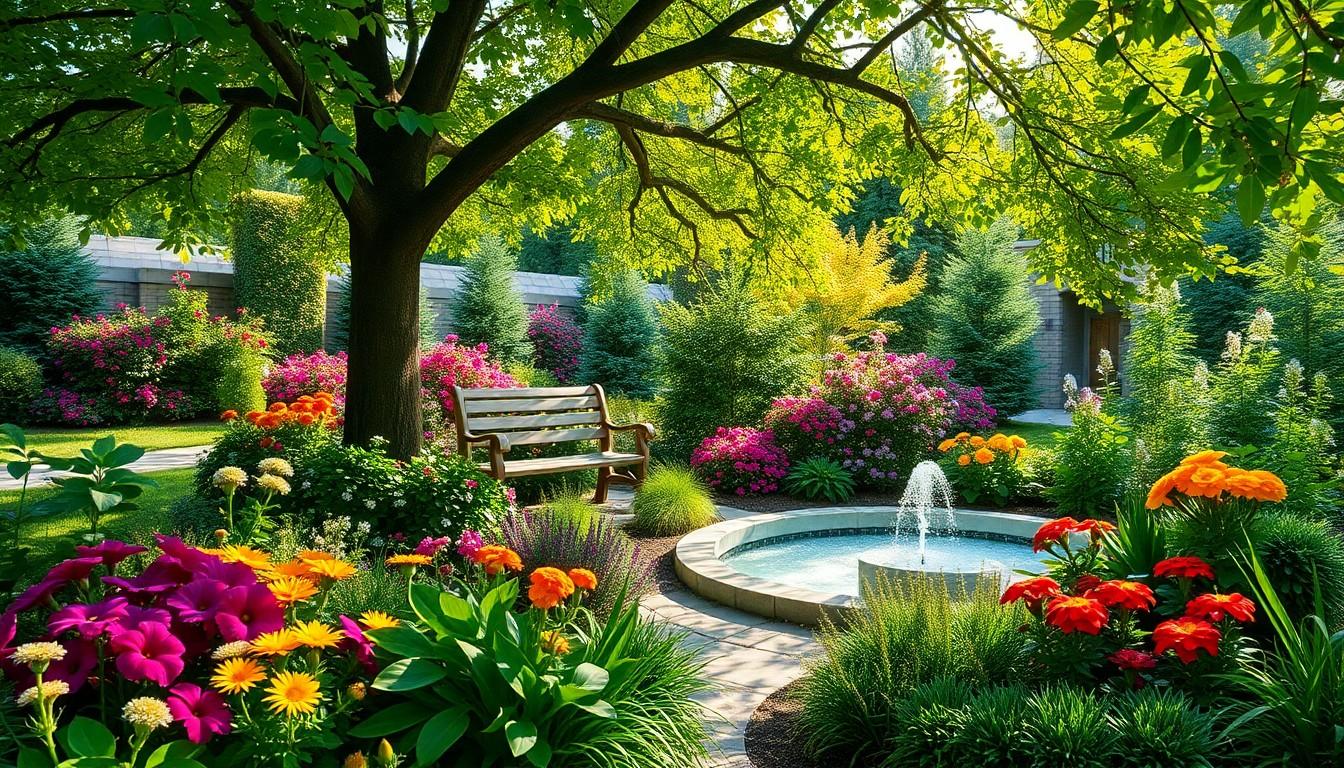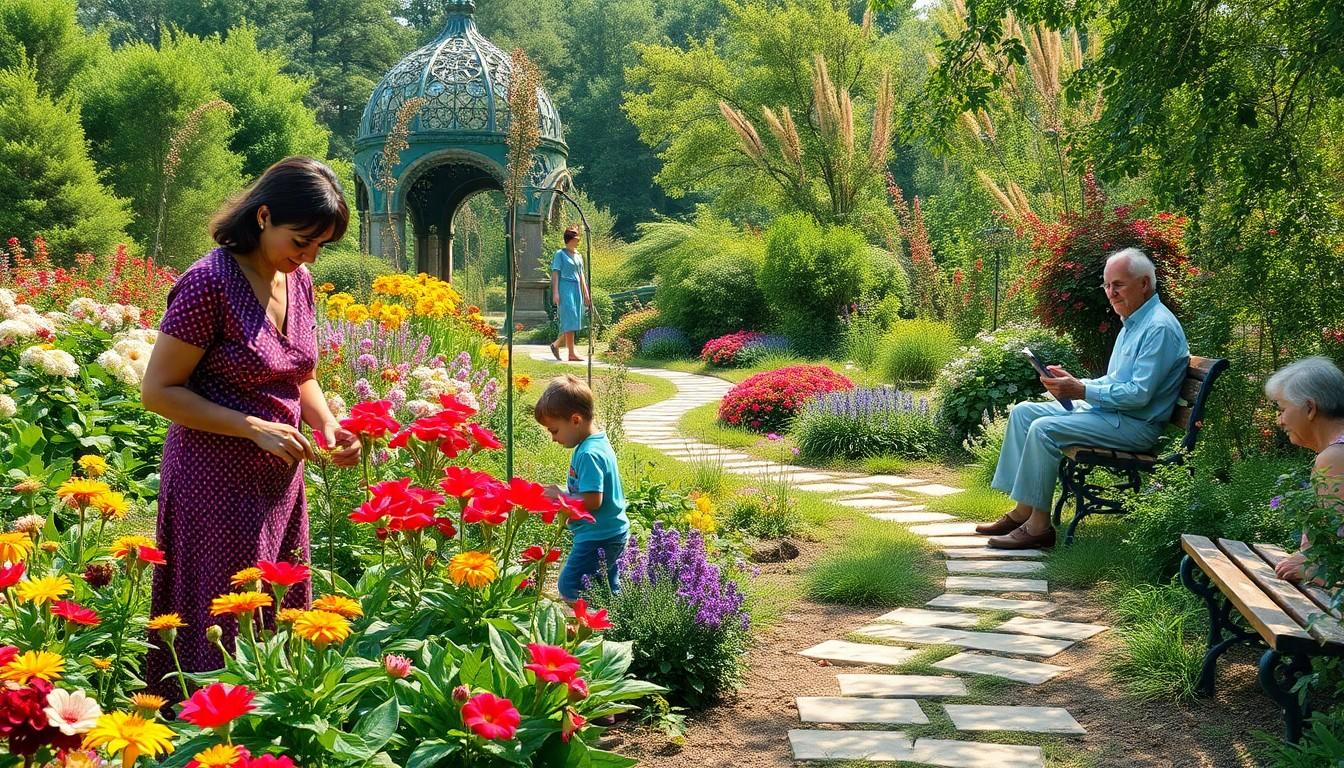Phone:
(701)814-6992
Physical address:
6296 Donnelly Plaza
Ratkeville, Bahamas.

Imagine stepping into a world where nature works its magic, soothing the mind and lifting the spirit. A healing garden is just that—a sanctuary designed to promote relaxation and rejuvenation. These enchanting spaces blend vibrant plants, calming water features, and cozy seating, creating an oasis that whispers, “Take a deep breath and let your worries drift away.”
A healing garden serves as a tranquil space where individuals connect with nature for stress relief and wellness. Vibrant plants, soothing sounds, and gentle fragrances contribute to an inviting atmosphere. Visitors experience the calming effects of elements such as flowers, trees, and shrubs that encourage mindfulness and reflection.
Calming water features, like ponds or fountains, enhance the sensory experience. Such elements create soothing sounds that promote relaxation and tranquility. Cozy seating areas, including benches and hammocks, invite individuals to pause and savor their surroundings.
Research supports the health benefits of spending time in nature. Studies show that exposure to green spaces can lower stress levels and improve mood. Healing gardens often incorporate diverse plant species to engage the senses, offering varying colors, textures, and scents.
Community involvement plays a vital role in establishing these gardens. Local volunteers contribute their time and effort to design and maintain these spaces. In some cases, therapeutic gardens are specifically designed for hospitals or rehabilitation centers, aiding in patient recovery.
Incorporating pathways encourages physical activity and exploration. Meandering trails lead visitors through the garden, inviting discovery and fostering a sense of adventure. Creating a multi-sensory experience enhances the healing properties of a garden, making it a holistic refuge for those seeking solace.

Healing gardens offer numerous advantages, impacting both physical and mental health positively. These gardens enhance well-being through a variety of natural elements.
Increased physical activity occurs within healing gardens, as pathways encourage movement and exploration. Access to nature promotes better cardiovascular health. Spending time outdoors boosts the immune system, contributing to overall wellness. Regular engagement with these gardens can reduce blood pressure and lower the risk of chronic disease. Exposure to sunlight helps in synthesizing vitamin D, essential for bone health. Active participation in garden maintenance fosters a sense of responsibility, enhancing physical fitness.
Healing gardens provide a calming environment that alleviates stress. Immersion in nature reduces anxiety with soothing sights and sounds. Engaging with plants and flowers promotes mindfulness, encouraging individuals to focus on the present moment. Research indicates that spending time in these gardens can improve mood and increase feelings of happiness. Visitors often report reduced symptoms of depression after spending time in a healing garden. Connections formed in serene spaces enhance social bonds, fostering community and support.
Healing gardens feature essential elements that promote tranquility and well-being. Among these, plant selection and garden design play significant roles in creating an inviting atmosphere.
Diverse plants enhance the sensory experience of a healing garden. Colorful flowers offer visual stimulation, while fragrant plants provide soothing scents that uplift mood. Native species, such as lavender and echinacea, draw local wildlife, enriching the ecosystem. Foliage with various textures also engages touch, inviting visitors to connect with nature. Incorporating plants with calming properties, like chamomile and valerian, encourages relaxation and peace. Seasonal variations ensure continual interest, allowing for year-round enjoyment. Each plant serves a specific purpose, contributing to the garden’s overall healing effects.
Thoughtful garden design maximizes the benefits of a healing garden. Pathways facilitate exploration, promoting physical activity and movement throughout the space. Arranging seating areas in cozy nooks encourages reflection, allowing individuals to pause and appreciate their surroundings. Incorporating water features, such as gentle fountains, provides soothing sounds that further enhance relaxation. Open spaces alongside lush greenery create a balanced atmosphere, offering beauty and tranquility. Signage can educate visitors about the plants and their healing properties, enriching the overall experience. Each design choice contributes to the garden’s purpose of fostering well-being.
Healing gardens come in various forms, each serving distinct purposes. Two prominent types are community healing gardens and therapeutic healing gardens.
Community healing gardens play a vital role in bringing people together. These gardens often arise from local initiatives, fostering connections and collaboration among residents. Volunteers participate in the design and maintenance of these gardens, making them a shared space for nurturing friendships and community spirit. They encourage individuals to engage with nature while promoting wellness through gardening activities. Diverse plant species populate these gardens, enhancing sensory experiences and attracting local wildlife. These vibrant spaces create environments where people can unwind, share stories, and support one another, contributing to overall mental well-being.
Therapeutic healing gardens specifically cater to health care settings, focusing on patient recovery and rehabilitation. Designed with accessibility in mind, these gardens often include pathways that facilitate movement and exploration. Healing gardens in hospitals and rehabilitation centers provide a peaceful retreat for patients, visitors, and staff. Elements such as colorful flowers and calming water features stimulate senses and promote relaxation. Evidence-based design principles guide plant selection, ensuring participants experience nature’s restorative benefits. These dedicated spaces help reduce stress, enhance mood, and support the healing process, underscoring the significant impact of nature on health.
Healing gardens offer a unique blend of nature and tranquility that significantly enhances well-being. By integrating vibrant plants calming water features and inviting seating areas these gardens create sanctuaries for relaxation and mindfulness. Their positive impact on both physical and mental health is well-documented making them valuable spaces in communities and healthcare settings alike.
As more people recognize the benefits of connecting with nature healing gardens will continue to thrive. They not only serve as beautiful landscapes but also as essential tools for fostering community bonds and promoting holistic health. Embracing the concept of a healing garden can lead to a deeper appreciation of nature’s restorative power and its role in enhancing quality of life.